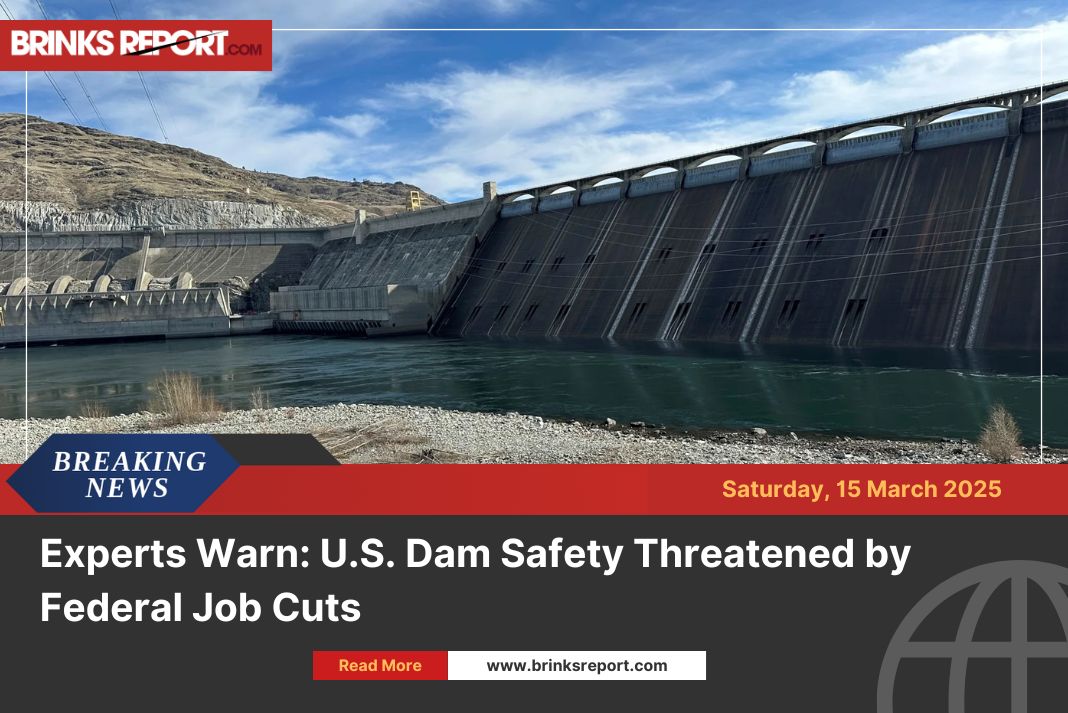
The Trump administration has reduced staff at federal agencies responsible for managing U.S. dams, raising concerns about public safety, power supply, and irrigation. Experts warn that these job cuts could make it harder to maintain dams properly, increasing the risk of failures and disasters.
Major Job Cuts at Key Agencies
The Bureau of Reclamation, which supplies water and electricity to 17 western states, has lost nearly 400 employees. More layoffs are expected, with workers at Grand Coulee Dam, the largest hydropower generator in North America, among those affected.

Lori Spragens, head of the Association of Dam Safety Officials, says losing experts like dam operators, engineers, and emergency managers makes it harder to prevent accidents. “Without these professionals, public safety and the environment are at risk,” she said.
Read More: Game-Changer Alert! Supreme Industries Seals $30M Deal to Take Over Wavin India’s Piping Empire!
The White House, however, defends the job cuts. Spokesperson Anna Kelly claims they will reduce government inefficiencies and improve disaster response. But a Bureau of Reclamation hydrologist, speaking anonymously, disagrees. “Dams require constant monitoring and maintenance. Losing experienced staff makes it harder to spot issues before they become serious problems,” the hydrologist said.
Widespread Concerns Across the Country
The issue is not limited to one agency. Leaders from 14 California water and power agencies have warned that cutting key dam maintenance staff could harm water delivery systems and public health.
The U.S. Army Corps of Engineers, which also operates dams, is facing similar cuts. Though officials have not given details, Neil Maunu of the Pacific Northwest Waterways Association says over 150 Corps employees in Portland, Oregon, have lost their jobs, and another 600 layoffs are expected across the region.
Other agencies involved in dam safety are also losing staff. The National Oceanic and Atmospheric Administration (NOAA) has cut jobs, and the Federal Emergency Management Agency (FEMA) shut down its National Dam Safety Review Board in January.
Rising Risks as Infrastructure Ages
These cuts come at a time when many U.S. dams are aging and need expert supervision. A report last year found at least 4,000 dams in poor or dangerous condition. Without regular inspections and maintenance, the risk of dam failures grows. Past disasters, such as the Oroville Dam crisis in 2017 and the Michigan dam failures in 2020, show how dangerous dam failures can be.
Employees and Lawmakers Speak Out
Stephanie Duclos, a former worker at Grand Coulee Dam, was among those laid off. She fears that eliminating positions like hers will overburden remaining staff. “The dam needs a big team to run properly. Fewer workers mean more stress and higher chances of mistakes,” she said.
Senator Alex Padilla of California, who helped renew the National Dam Safety Program through 2028, criticized the layoffs. “Dam safety is a national security issue. Cutting these jobs puts Americans at risk,” he said.
Also Read: Tamil Nadu’s Economy Faces Challenges but Also Has Growth Opportunities
While legal challenges to the job cuts are ongoing, experts and employees continue to warn that reducing staff at dam agencies could have serious consequences for public safety and infrastructure.












